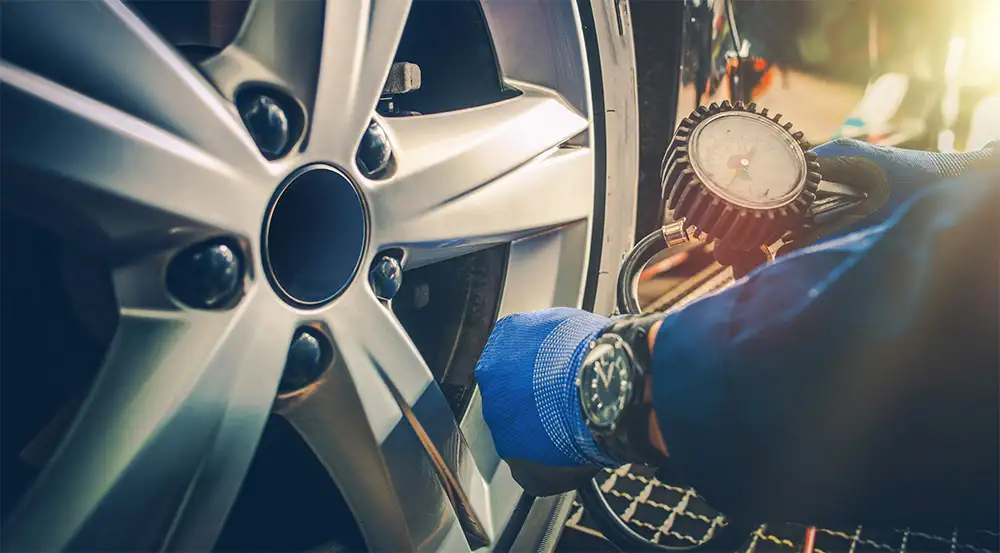In Virginia, annual vehicle inspections ensure that every car, truck, and motorcycle meets the state’s strict safety standards. These inspections go beyond paperwork—they are designed to prevent accidents, keep roads safe, and extend your vehicle’s lifespan by catching wear and tear early. Whether you’re a first-time car owner or a seasoned driver, understanding how the process works helps you avoid fines, delays, and unnecessary repairs.
This guide breaks down every stage of the Virginia vehicle inspection process, including what’s checked, how to prepare, and what to expect if your vehicle doesn’t pass.
Why Is a Vehicle Inspection Required in Virginia?
The Commonwealth of Virginia mandates annual safety inspections to ensure that all registered vehicles remain roadworthy. These inspections protect drivers, passengers, and pedestrians by identifying safety issues before they cause breakdowns or collisions. Each inspection is conducted by a licensed mechanic at an approved inspection station, ensuring consistency and compliance across the state.
Inspections also serve as an early warning system for drivers. Components such as tires, steering systems, and brakes can deteriorate over time, even with regular maintenance. Detecting these issues before they escalate prevents costly damage, reduces the risk of roadside emergencies, and maintains optimal vehicle performance. The program also reinforces environmental responsibility: in certain counties, vehicles must undergo emissions testing to reduce pollution and improve air quality.
Beyond safety, these inspections build accountability. They encourage vehicle owners to maintain consistent care throughout the year, which in turn boosts resale value, extends vehicle lifespan, and ensures compliance with insurance and registration laws.
Recommended reading: Virginia Motor Laws And Regulations
What Vehicles Are Required to Pass the Annual Virginia State Vehicle Inspection?
Most vehicles registered in Virginia must pass an annual inspection to remain legally on the road. This includes:
Passenger Vehicles (Cars, SUVs, Minivans)
Personal-use vehicles make up the majority of inspections. These are checked for overall safety, including tire condition, braking systems, lights, and emissions. Keeping your vehicle in good shape not only ensures compliance but also improves reliability during daily commutes or long drives.
Trailers and Semitrailers
Trailers are inspected separately from the towing vehicle. The inspection focuses on structural integrity, brake connections, and lighting systems. Regular trailer inspections are critical to preventing accidents involving detached loads or faulty couplings.
Trucks and Buses (Light and Heavy-Duty)
Commercial and utility vehicles undergo more rigorous checks because of their higher usage rates and load capacities. Inspectors pay particular attention to suspension, braking power, and steering components to ensure that heavy-duty vehicles can stop, turn, and handle safely under load.
Motorcycles
Motorcycles have their own inspection standards. These include tire tread depth, brake responsiveness, horn operation, and visibility gear such as headlights and reflectors. Because motorcycles are more exposed, even minor issues can pose major safety risks.
Motor Homes (Light and Heavy-Duty)
Motorhomes or RVs must meet both passenger and heavy-duty standards. Inspections verify that braking, electrical, and structural systems can safely handle long-distance travel.
Exemptions apply to:
- Antique vehicles: Registered as antique, these are used only for exhibitions, parades, or club events. However, owners must still keep them in safe condition.
- Farm use vehicles: Vehicles strictly used for agricultural work are exempt from the inspection requirement but may still be checked for safety if driven on public roads.
If you’re uncertain about your vehicle’s status, you can verify inspection requirements with your local DMV office or an authorized inspection station.
What Happens During a Safety Inspection?
Virginia’s inspection process is standardized to ensure fairness and consistency. A licensed inspector checks all major systems to confirm that the vehicle meets or exceeds safety benchmarks. The process usually takes 30–60 minutes, depending on the vehicle type.
Exterior Walkaround
The inspection begins with a visual check for any apparent damage or missing components. This includes examining mirrors, bumpers, and doors for secure attachment. Visible body damage or rust that compromises safety can lead to failure. Proper alignment of exterior components also affects aerodynamics and visibility, making this step crucial.
Lighting Systems
Inspectors test every light, headlights, taillights, brake lights, reverse lights, turn signals, and hazard flashers, to confirm they work correctly and meet brightness standards. Lighting is critical for visibility and communication with other drivers. Even a single non-functioning bulb can cause a failed inspection, so checking them in advance is wise.
Brake Systems
Brake inspections cover pads, rotors, drums, and hydraulic lines. Inspectors look for uneven wear, leaks, and corrosion. A functioning parking brake is also mandatory. Since brakes are the first line of defense in emergencies, any soft pedal feel, squeaking, or delayed response can lead to failure.
Tires and Suspension
Tires are inspected for tread depth, bulges, cracks, and sidewall damage. The suspension system shocks, struts, and springs are checked for leaks or instability. Proper tire health ensures traction and handling, while the suspension keeps your ride smooth and stable, preventing loss of control during turns or bumps.
Steering Systems
The steering system must be responsive and free of excessive play or stiffness. Inspectors verify power steering fluid levels and inspect linkages for wear or looseness. Faulty steering not only makes driving difficult but also increases the risk of accidents, especially at high speeds.
Windshield and Wipers
The windshield must be free of large cracks or obstructions that impair visibility. Wipers must clean the glass effectively, leaving no streaks. Since visibility issues are among the top causes of inspection failure, replacing worn blades before your appointment can help prevent repeat visits.
Horn and Mirrors
The horn must produce an audible, clear sound, and mirrors should be intact and properly positioned. These items are simple but vital for driver awareness and communication in traffic.
Exhaust and Fuel Systems
Inspectors check for leaks, damaged components, and proper installation. Exhaust leaks can allow harmful fumes to enter the cabin, while fuel leaks pose a fire hazard. Ensuring these systems are tight and corrosion-free keeps both driver and environment safe.
Seat Belts and Airbags
Inspectors confirm that all seat belts lock and retract properly, and that airbags show no fault indicators. These systems significantly reduce injury risks in collisions, making them non-negotiable for passing inspection.
Emissions Equipment
In counties where emissions testing is required, vehicles undergo additional testing to ensure that catalytic converters and sensors function properly. These tests help Virginia maintain its air quality goals and reduce vehicle pollution.
When your vehicle passes, you’ll receive a 12-month inspection sticker. If issues arise, your inspector will guide you on the repairs needed before retesting.
What Happens If My Vehicle Does Not Pass the Inspection?
Failing an inspection means your vehicle isn’t considered safe for everyday road use. However, Virginia provides a fair process for correction.
After receiving a reject sticker, you’ll also receive a detailed inspection report listing all issues found. This transparency helps your mechanic repair precisely what’s needed. You then have a 15-day grace period to complete the repairs. During this time, you can legally drive only to and from repair shops or inspection facilities.
If repairs are made within the grace period, a reinspection at the same station is typically free and faster, since it covers only the failed areas. Missing this window can result in fines, and driving a vehicle that still doesn’t meet standards may lead to impoundment or citations.
An innovative approach is to address not just the failed points but also any upcoming maintenance concerns. Doing so can prevent future rejections and improve overall performance.
6 Most Common Reasons for Virginia State Inspection Failure
Worn Tires
Tires are the foundation of vehicle safety. If the tread depth is below 2/32 of an inch, the vehicle must be failed. Uneven wear may indicate alignment or suspension problems that should also be corrected. Regular tire rotations and pressure checks can extend tire life and reduce replacement costs.
Brake Problem
Worn or defective brakes constitute a significant hazard. The inspector checks for leaks, missing parts, and pad thickness. If your brakes squeal or take longer to stop, replace pads before inspection day. Remember, effective braking depends on both mechanical condition and hydraulic pressure, so low fluid levels can also cause a failure.
Cracked or Tinted Windshield
A cracked windshield can distort visibility or weaken the glass, especially during a sudden impact. Excessively dark tints are also illegal. Replacing or repairing damaged glass before inspection prevents immediate rejection and keeps your view unobstructed.
Lighting Issues
Faulty lights are easy to overlook but are commonly the cause of inspection failure. Ensure all bulbs, reflectors, and lenses are clean and functional. Dim, misaligned, or discolored headlights should be replaced or adjusted before the appointment.
Emission Failures
If you live in a county that requires emissions testing, failure can occur due to excessive pollutants or a malfunctioning exhaust system. Routine maintenance, such as oil changes and air filter replacements, helps your engine burn fuel efficiently and meet emission standards.
Dashboard Warning Lights
While not every dashboard light indicates failure, persistent warning indicators (such as ABS or airbag lights) can disqualify your car. Addressing electrical or sensor-related issues early prevents them from triggering larger system malfunctions later.<
How to Prepare for a Virginia Vehicle Inspection
Preparation can make all the difference between passing and failing. Start by performing your own quick check at home.
Lights
Walk around your car with the headlights and hazards on: test turn signals, brake lights, and reverse lights. Replacing bulbs costs little compared to a reinspection fee and saves time.
Tires
Check for visible cracks or bald spots. A small coin test (placing a penny in the tread) helps measure depth if you can see the top of Lincoln’s head, it’s time to replace them. Maintaining proper tire pressure also improves fuel economy and braking distance.
Windshield
Look closely for chips or cracks, especially in the driver’s line of sight. Repair kits can fix minor damage, but significant cracks require professional replacement. Clean your windshield regularly to prevent residue buildup that impairs visibility.
Horns and Wipers
Ensure your horn sounds clearly and replace worn wipers that streak. In heavy rain, visibility can drop instantly, so this small detail matters more than most realize.
Brakes
If you hear squealing or grinding, it’s best to have them checked before inspection day. Worn pads can damage rotors, turning an inexpensive fix into a costly repair.
Review your maintenance records to confirm that oil changes, fluid top-offs, and tune-ups are performed on time. Consistent maintenance not only helps pass inspections easily but also saves money in the long run.
FAQ
Q: How much does a Virginia vehicle inspection cost?
A: Costs vary slightly by vehicle type and location. Passenger vehicles typically pay a state-standard fee, while motorcycles and trailers may pay different fees. Always confirm pricing with your local inspection station before your visit.
Q: What happens if I fail my vehicle inspection?
A: You’ll receive a reject sticker and a written list of issues. You have 15 days to fix them and return to the same station for a reinspection, usually free of charge.
Q: How often do I need to get my vehicle inspected in Virginia?
A: Every 12 months. Your inspection sticker displays the expiration month, so schedule your next visit in advance to avoid penalties.
Q: Can I drive my car if it fails inspection?
A: Yes, but only during the 15-day grace period and for repair purposes only. Driving elsewhere risks fines or citations.
Q: Do electric or hybrid vehicles require inspection?
A: Yes. Although emissions testing may not apply, safety checks—brakes, tires, and lights are still mandatory.


